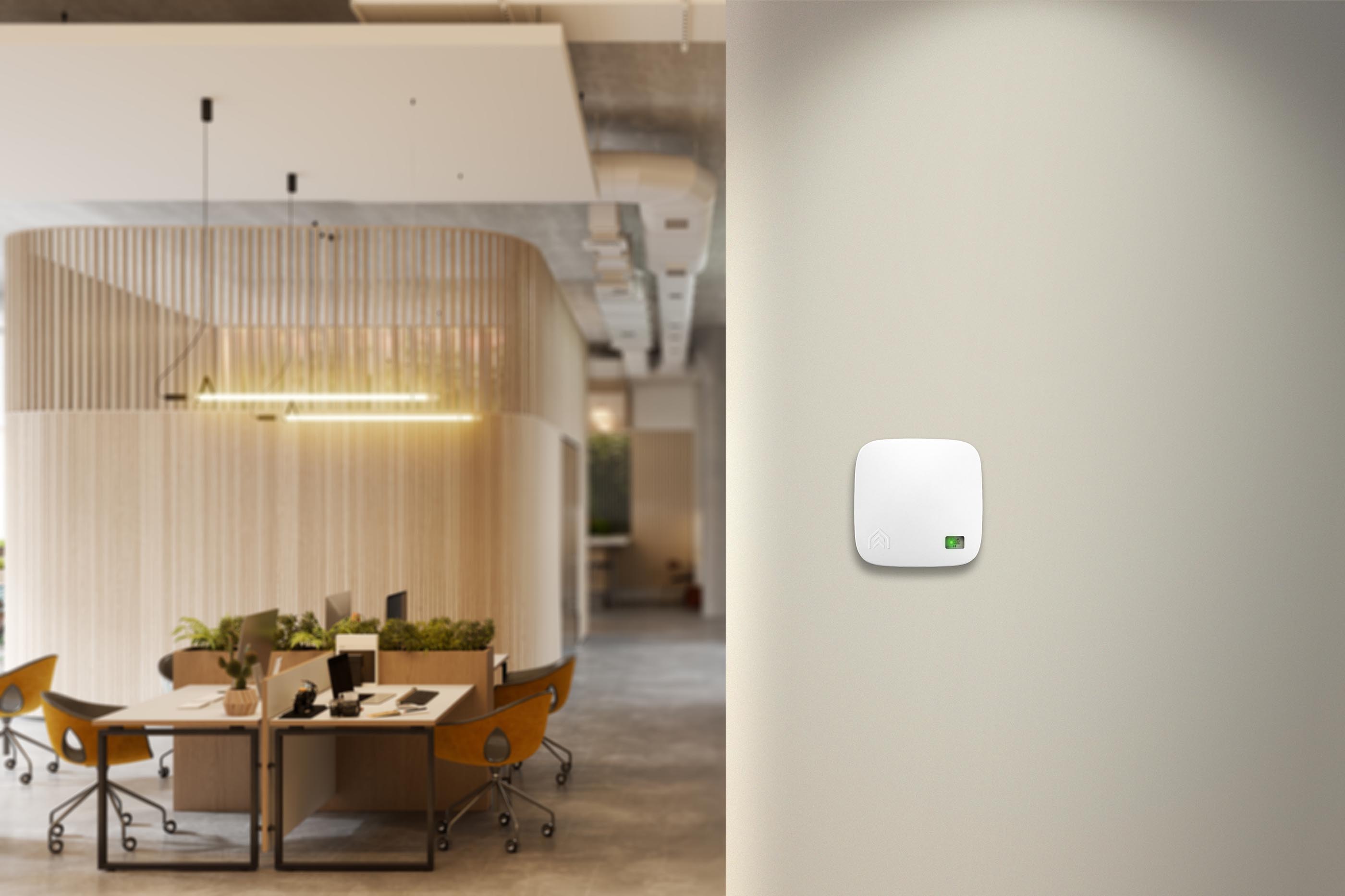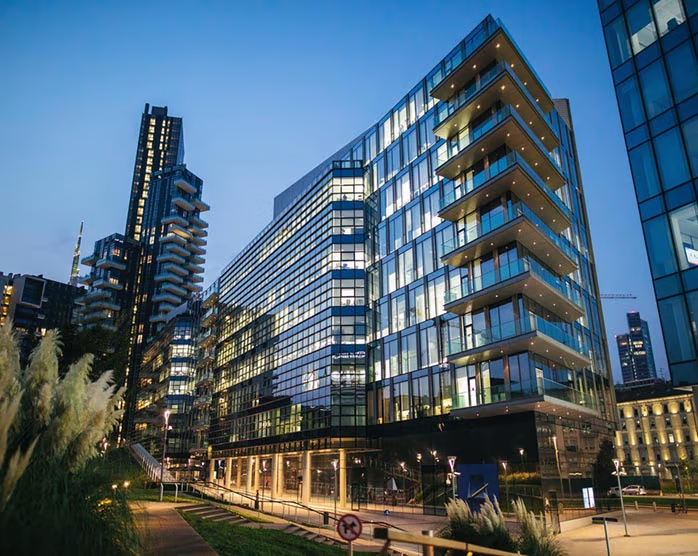
Support
Get help with setting up and using AirSuite sensors and software.
Wi-Fi or LTE?
Which sensor should we get - Wi-Fi or LTE? And why AirSuite?
AirSuite’s range of indoor air quality sensors are expertly engineered to measure environmental variables (like CO₂, noise levels, light, humidity and more) and connect to the Cloud via LTE or Wi-Fi.
In this article, we’ll discuss reasons for choosing Wi-Fi or LTE (or a combination of the two). Plus, we’ll look at some other networks our competitors use, so you can feel confident you’ve made the right choice.
The Advantages of Wi-Fi
The main advantage of Wi-Fi is that you probably already have it in your building – and in that sense, it’s free!
The range of a Wi-Fi access point is very limited, but you can install your own access points to gain coverage in places that are hard to reach with long-range wireless options – like in the middle of a large steel-and-concrete-constructed commercial building.
Wi-Fi has a high data throughput, and no network costs, so AirSuite Wi-Fi sensors are configured to transmit data to the Cloud immediately every time they take a measurement, at 10-second intervals. While this undoubtedly gives you the best possible visibility of your indoor environment, most people don’t need that level of detail, unless they are in a research or academic setting.
The Downsides of Wi-Fi
Several hidden costs exist with Wi-Fi, which means the total cost of ownership could exceed LTE.
Worst case, your Wi-Fi device may not work at all, depending on your Wi-Fi network’s configuration – we often hear that captive portals and firewall rules are blockers in the corporate world. If you’re thinking of going with Wi-Fi, please make sure to check our Wi-Fi compatibility guide first. On the other hand, we can always guarantee our LTE devices will work, as long as you’re in an area with LTE coverage.
But it doesn’t stop there – common issues Wi-Fi users experience include:
- Outages: What happens if the Wi-Fi network goes down, and who is responsible for getting everything back online?
- Forgetting to update: What happens if the Wi-Fi password gets changed and someone forgets to update the password used by all sensors?
- Policies to update passwords: Many large organisations have a policy in place to change their Wi-Fi passwords periodically (e.g. every 6 months). Manually updating Wi-Fi passwords on all connected devices is not feasible.
- Time and effort to maintain security: Most users of Wi-Fi networks choose to follow security best practices by using a separate network for IoT devices, so they are segregated from the rest of their corporate network. However, this takes time and effort to set up and maintain.
- Less efficiency: Wi-Fi devices are more power-hungry than LTE – they can’t operate on battery for a long period of time and usually need to be plugged in.
- The resources it takes to resolve issues: It costs money, time and schedule coordination to fix Wi-Fi issues.
LTE – the smart choice for most of our customers
AirSuite LTE devices use next-generation, modern cellular networks to connect to the Internet, just like your smartphone. The network we use is called LTE-M, sometimes known as LTE Cat-M1, which runs on the same cell towers your smartphone connects to, but it’s only used by low-power IoT devices like electricity smart meters, water meters, EV chargers, and other connected devices. It’s the network of choice for these devices because of its excellent nationwide (not to mention global!) coverage.
In New Zealand, AirSuite has partnered with Spark to deliver a nationwide LTE network with exceptional coverage. Spark’s LTE network is available in all major cities and towns, covering 98% of the population. You can check Spark LTE coverage in your area using Spark’s coverage map – make sure to choose “Cat-M1” on the map.
In Australia, AirSuite has partnered with Telstra, the country’s largest IoT network provider. Check your area using Telstra’s coverage map.
AirSuite recommends most customers use LTE because of its many benefits which include:
- Widespread coverage: It delivers great worldwide coverage, in rural areas as well as urban areas. You can expect to have the same reliable coverage nationwide as your smartphone has.
- Minimal effort: Installing, deploying and maintaining your device requires little effort.
- Remote updates: It delivers over-the-air updates.
- Battery power: Devices don’t need to be plugged into the wall which means you can position them in the optimal location.
- Great battery life: LTE devices operate on battery for 3 years or longer depending on your requirements.
- Its own dedicated network: LTE devices aren’t on your Wi-Fi network, and the network is hidden from other users, so there’s no risk of interference. Plus, you don’t have to worry about Wi-Fi passwords or getting locked out of the network.
AirSuite LTE sensors are also provisioned with Narrowband IoT (NB-IoT) hardware. We’ve found LTE Cat-M1 to work better in most cases, however, if you’re in a part of the world where NB-IoT works better than LTE Cat-M1, let us know – we can turn this on for you with an over-the-air update. ✨
Why use AirSuite LTE, instead of other long-range networks?
To get the most out of your air quality sensors, it’s important to ensure:
- High data throughput for frequent recording of data and transmission to the Cloud
- Real-time visibility
- Strong signal strength to minimise power consumption and maximise battery life
- Sufficient transfer speed and bandwidth to support over-the-air updates
Most of our competitors use older technology like Sigfox and LoRaWAN. While they are low-cost and low-power, they come with a set of security, speed and coverage concerns.
Here’s a rundown of the top three alternatives with their benefits and drawbacks:
-
Sigfox, a long-range IoT network, supports great battery life, is low cost, and scalable. Sigfox tends to have good coverage in main centres, but limited coverage elsewhere. See for yourself on the Sigfox coverage map.
Sigfox has a very limited data transfer rate, which is where it gets its great battery life from, but it means that devices can’t transmit data as frequently as LTE, and they can’t be updated remotely. The inability to provide over-the-air security updates is a serious security concern.
-
LoRaWAN stands for Long range, low power, wide area network. It’s a popular choice for the Internet of Things because of its low power consumption, low cost, and extensive network coverage. However, like Sigfox, LoRaWAN tends to have limited coverage outside the main centres. Check out the Spark LoRaWAN coverage map - compare the coverage options for “LoRaWAN” versus “Cat-M1” to see the difference.
If you aren’t in a LoRaWAN coverage area, you can use a LoRaWAN Gateway to bridge the gap. However, this adds complexity and cost to your deployment - and you mightaswell just be using Wi-Fi at that point.
-
Ethernet (not wireless): Ethernet is often very reliable, and devices can also be powered by the Ethernet cable (meaning USB power is not required) if using supported Power-over-Ethernet (PoE) hardware on both ends. However, unless specially configured, your devices aren’t typically on their own segregated network, which can be a security concern. It’s also very time-consuming to run new ethernet cables to desired locations. For these reasons, it’s not the most scalable or secure option.
Ethernet is a good option in new buildings, where you can run new cables to desired locations during the construction phase. However, AirSuite sensors were originally designed in collaboration with the New Zealand Ministry of Education to be deployed in thousands of existing buildings, where it would be extremely cost-prohibitive to run new cables.
Summary
- AirSuite recommends LTE as the best connectivity option for most people, thanks to its widespread coverage, great battery life, and flexibility, enabling hassle-free installation and maintenance-free operation.
- Wi-Fi is the best option when high-resolution, real-time data collection is necessary. Otherwise, the total cost of ownership may surprise you, so it is best-used in specific locations where LTE coverage is limited.
- Sigfox and LoRaWAN are not recommended: while devices operating on these networks can be low-cost and battery-powered, they are not very future-proof. Coverage is very limited outside of urban areas, and data can’t be transmitted as frequently as LTE. Devices can’t be upgraded remotely to take advantage of new features, and security vulnerabilities can’t be fixed.
- Ethernet is reliable and powerful, but running cables and installing PoE equipment is often cost-prohibitive, even during the construction phase of a new building. Ethernet-connected sensors are uncommon due to their lack of flexibility, so options in this space are limited.
Still unsure? We’ve got you covered.
Our team of environmental specialists and engineers can configure sensors, software, data and reporting tools to measure and report on what’s most important to your organisation. When you choose AirSuite, you’re not just getting access to cutting-edge hardware and software, you’re also getting access to our expertise.
After talking to us, you may discover you need a combination of Wi-Fi and LTE devices. We can visit your location(s) and give you advice – removing guesswork.
For commercial enquiries or to request a demo
Now’s a great time to monitor your indoor environment. We’ve made it easy for you to get in touch or request a run-through.
Contact us
Further info
- Read more about the Spark + AirSuite partnership on Spark’s website
- Check out our range of AirSuite LTE and Wi-Fi Sensors, including our new AirSuite Glance LTE (perfect for schools, early childhood centres and homes) and AirSuite Sense LTE (made for workplaces and commercial buildings).
Alerts
- Configure alert thresholds
- Email Notifications
- Manage Alerts
- Mobile App Notifications
- Our Recommendations
Connectivity
- Battery Life
- LTE Coverage Guide
- Over-the-air Updates
- Troubleshoot Inactive LTE devices
- Troubleshoot Inactive Wi-Fi devices
- Wi-Fi Access Point Compatibility
- Wi-Fi or LTE?


